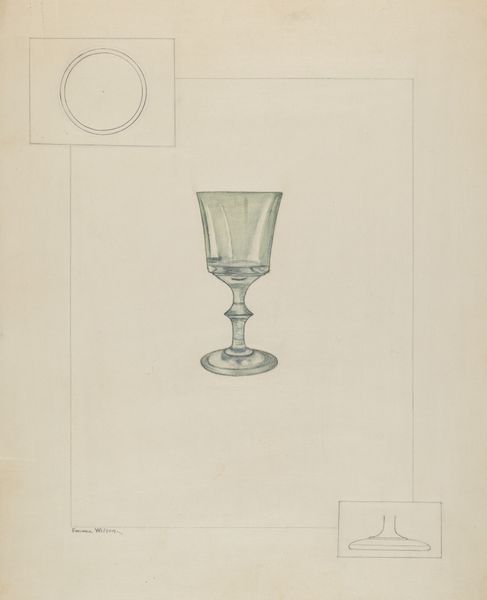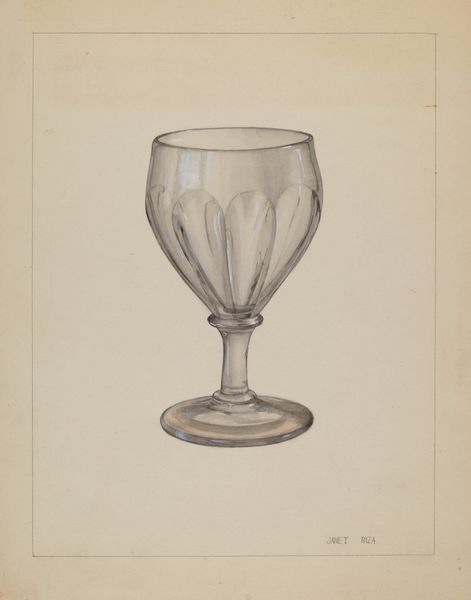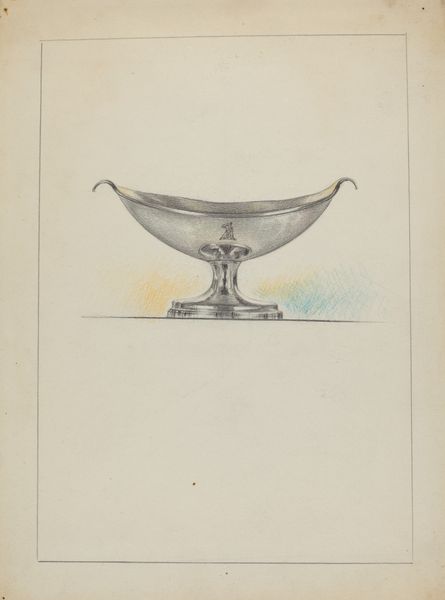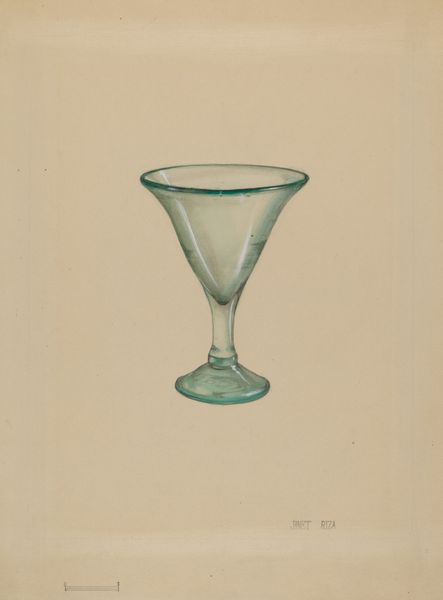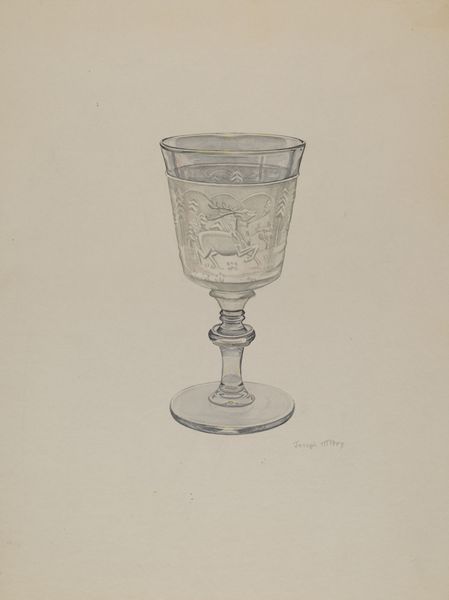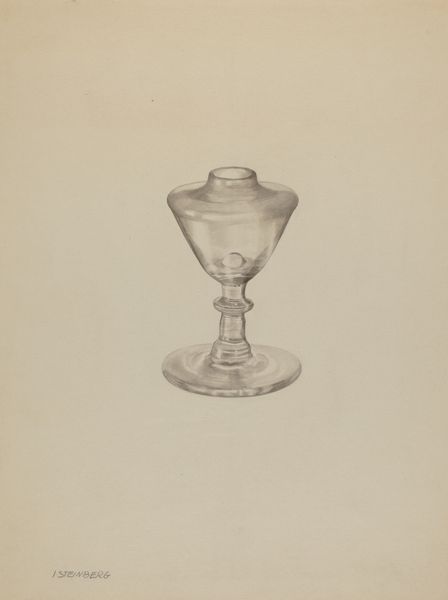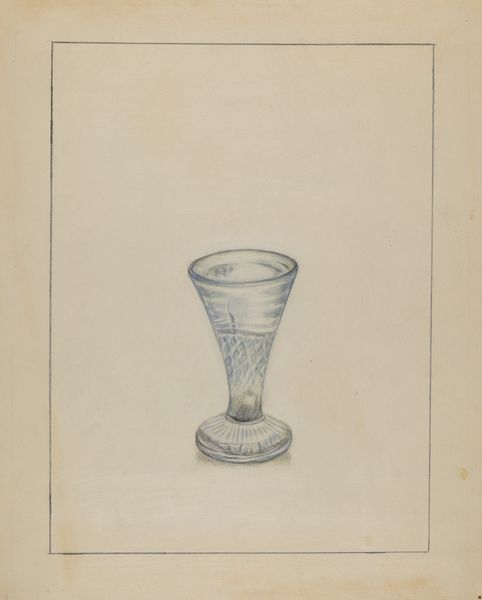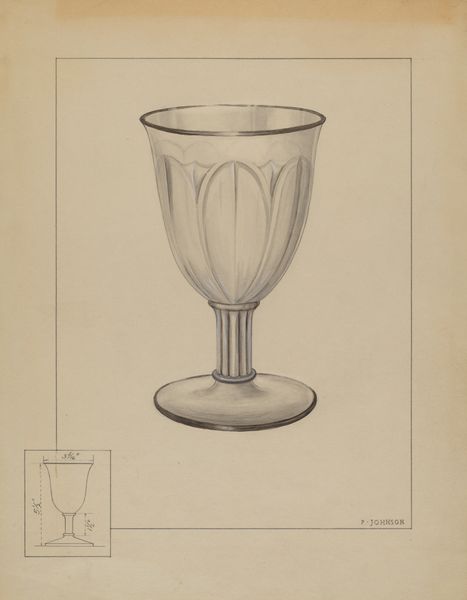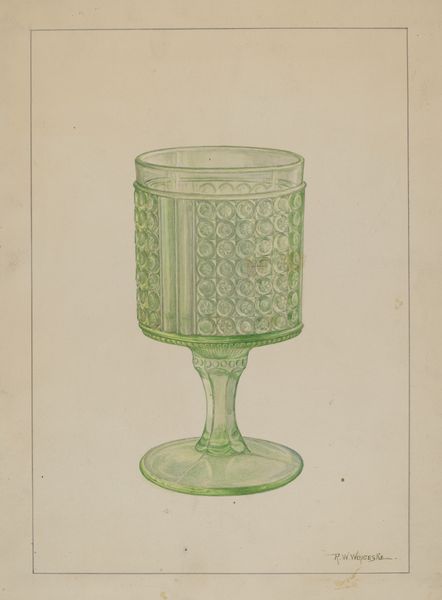
drawing, mixed-media, paper, pencil
#
drawing
#
mixed-media
#
paper
#
pencil drawing
#
pencil
#
watercolor
Dimensions: overall: 35.5 x 27 cm (14 x 10 5/8 in.) Original IAD Object: 5 1/4" high; 6" in diameter at top; 3 1/4" in diameter at base
Copyright: National Gallery of Art: CC0 1.0
Curator: Here we have "Pewter Compote," a mixed-media drawing from around 1937 by Carmel Wilson. It appears to combine pencil and watercolor on paper. What’s your initial reaction to it? Editor: The monochrome palette immediately strikes me. It’s so understated, almost melancholic, given what a festive object this would normally be. I am used to seeing pewter items, but drawn and with such muted tones, this gives a completely new, still impression. Curator: Exactly. And that’s partly because the compote, often associated with celebrations and communal sharing, here exists in a solitary depiction, removed from its typical context. This draws attention to its symbolic weight – the compote can represent abundance, hospitality, and even status. Does that resonate? Editor: Absolutely, particularly regarding the changing landscape for women artists, designers, and craftspeople of the period. This technical drawing can stand as a statement, that women like Wilson were capable and competent for even the more tedious and seemingly inconsequential works of design during a time when this might not have been immediately recognized. It asks us to appreciate women who quietly kept their art going even within limiting times. Curator: That's an important point, this resonates on a deep, almost unconscious level. Even a drawing, when given dedicated, detailed focus, carries meaning. Note the meticulous pencil work used for the reflective surfaces to bring them to life. The object isn't merely depicted; its essence, its material "humanness" is captured through artistic skill. The rendering conveys both its purpose and its cultural significance. Editor: And by using both pencil and watercolor, there's an inherent tension between the structural rigidity and industrial design elements and the fluidity, the softness. Curator: That balance is critical, in a way grounding its visual legacy for future viewers. What starts as surface or the first impression ultimately reveals layered values about aesthetics, class, the role of the artist, and the passage of time itself. Editor: Precisely! Thank you, this gave us a great opportunity to reconsider the artistic significance and importance of this under appreciated artifact. Curator: Agreed. Viewing everyday images with a socially conscious mind helps keep art alive, relevant, and, ultimately, revealing.
Comments
No comments
Be the first to comment and join the conversation on the ultimate creative platform.




